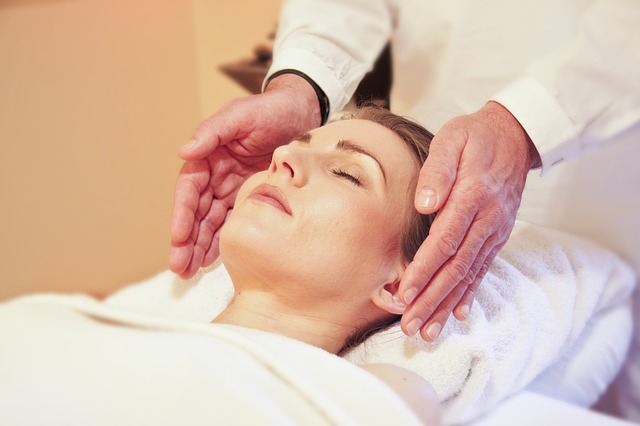The term Reiki derives from the kanji rei, meaning spirit, and ki, meaning energy or life force.
Reiki is a form of alternative medicine implemented in a therapeutic format to heal patients.
The technique originated in Japan and was developed by Mikao Usui during his meditative Buddhist training.
On the twenty-first day of fasting, while climbing Mt. Kurama, the Reiki technique came to him in the form of a spiritual revelation.
In 1922, Usui founded an association called Usui Reiki Ryōhō Gakkai, translating to Usui’s Spiritual Energy Therapy Method Society, in which he taught the Reiki method of therapy to over two-thousand students before his death four years later.
Because his teachings were passed master to student, it is unknown whether certain original fundamentals survived the transfer through time.
However, the core value behind Reiki is that the spiritual, as well as the physical, injuries of a person, must be healed. Mikao Usui wrote the Five Principles that, when translated into English, reads as follows:
√ The secret art of inviting happiness,
√ The miraculous medicine for all diseases.
√ At least for today:
- Do not be angry,
- Do not worry,
- Be grateful,
- Be kind to people.
√ Every morning and evening, join your hands in meditation and pray with your heart.
√ State in your mind and chant with your mouth.
For improvement of mind and body.
Usui Reiki Ryōhō.
The founder,
Mikao Usui.
Attentively following the five principles is what allows the spiritual energy to heal the body and mind. Because of this, meditation and achieving peace of mind is just as important as understanding the practice.
Due to Usui’s teachings, clinics spread from Japan to Hawaii by student Hawayo Takata. If she hadn’t introduced the methods to foreign areas, Reiki may never have expanded from Japan to the West.
She is responsible for the increased popularity of Reiki and its practice within the United States today.
The Study of Reiki
In addition to the traditional Reiki taught by Usui, differing branches have appeared due to widespread travel of teachers and globalization of practice.
Among these is Western Reiki, which originates from Hawayo Takata’s method. Western Reiki differs from traditional as it was transformed to be more comprehensible during World War II.
The core difference lies in the hand placement. Usui’s methods focus on specific areas such as the head and neck, as well as the precise location of the injury, illness, and discomfort, whereas Western Reiki focuses on the body as a whole and integrates chakra into treatment.
Touch is applied to both the front and back of the subject, focusing on the head, torso, and feet.
When teaching Reiki healing to his students, Usui taught using the five principles, meditation, and one-on-one lessons.
Western Reiki, however, separates the process into three sections called degrees.
The first degree involves learning the history and meaning of Reiki, as well as proper hand placements.
Sessions focus on meditation and treating the entire body rather than areas.
The second degree teaches symbols used for strength and connection. These symbols, when implemented, allow the practitioner to heal across distances, sometimes even apart from the patient. The healing of emotional and mental issues is also explored.
In the third and final degree, the student advances to Reiki Master. Through this process, the student learns new symbols and is taught how to channel and activate energy in another person.
Treatment and Benefits
Reiki techniques encompass healing through touch and hand placement. It uses no equipment, instead implementing breath, massage, and focused looking.
During entire body treatments, the patient lies on his back while healers employ both touch and near-touch methods. During Traditional Japanese Reiki, a specific area, such as an injury, will be targeted.
During treatment, energy is transferred from the practitioner to the patient. This process is called attunement.
Its purpose is to strengthen the natural healing process to cure ailments of both physical and mental properties.
Usui’s methods employ hand placement to treat diseases and conditions including mental, metabolic, nervous, skin, and respiratory disorders.
Morning sickness, ulcers, inflammation, and fever, among other such ailments are also targeted.
Validity of Treatment
There is little to no scientific evidence to support this holistic therapy, or that its practice cures physical ailments and disorders.
Organizations such as the American Cancer Association and the National Center for Complementary and Alternative Medicine raise concerns over the lack of proof and the danger of patients with serious illnesses, such as cancer, forgoing clinical treatments in favor of alternative treatments.
Regardless, individuals have attested to Reiki treatment alleviating symptoms of illness and achieving positive results.(1)
Concerns have been raised that such beliefs may be the result of a placebo effect. However, just as little scientific evidence supports these concerns.
While little evidence exists to support the success of physical treatment, Reiki has been shown to relieve mental health issues such as anxiety, stress, and depression.(2)
As Reiki brings peace of mind, a sense of rejuvenation, and focuses on spirituality, it serves as a safe and positive form of complementary therapy.
Using Reiki in addition to clinical treatment is an effective method of healing both the body and the mind.
Further reading:
- What Your Need To Know About Reiki Before Your Reiki Massage
- Ways Thai Massage Can Provide Stress Relief (Benefits, Effects and Tips)
- Biodynamic Therapy – A Guide to it’s Method and Practice
Researches and references
(1) http://www.aetw.org/reiki_research.html
(2) http://psychcentral.com/lib/reiki-healing-and-mental-health-what-the-research-shows/
Leave Feedback: Was this article helpful?

